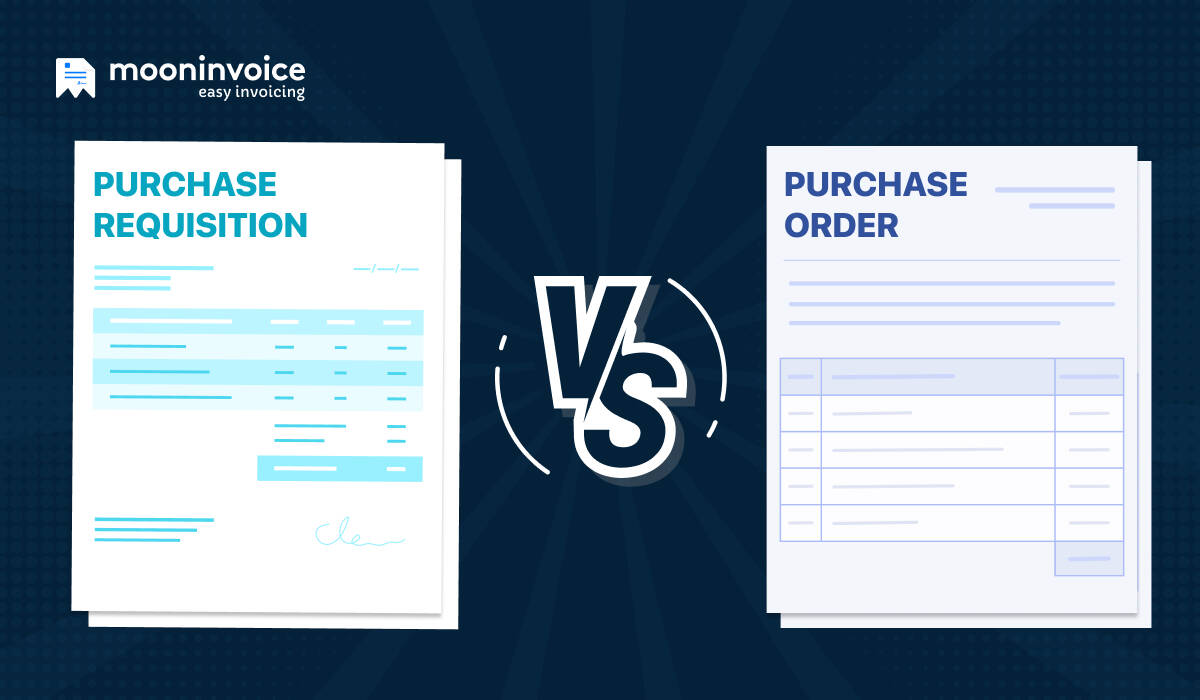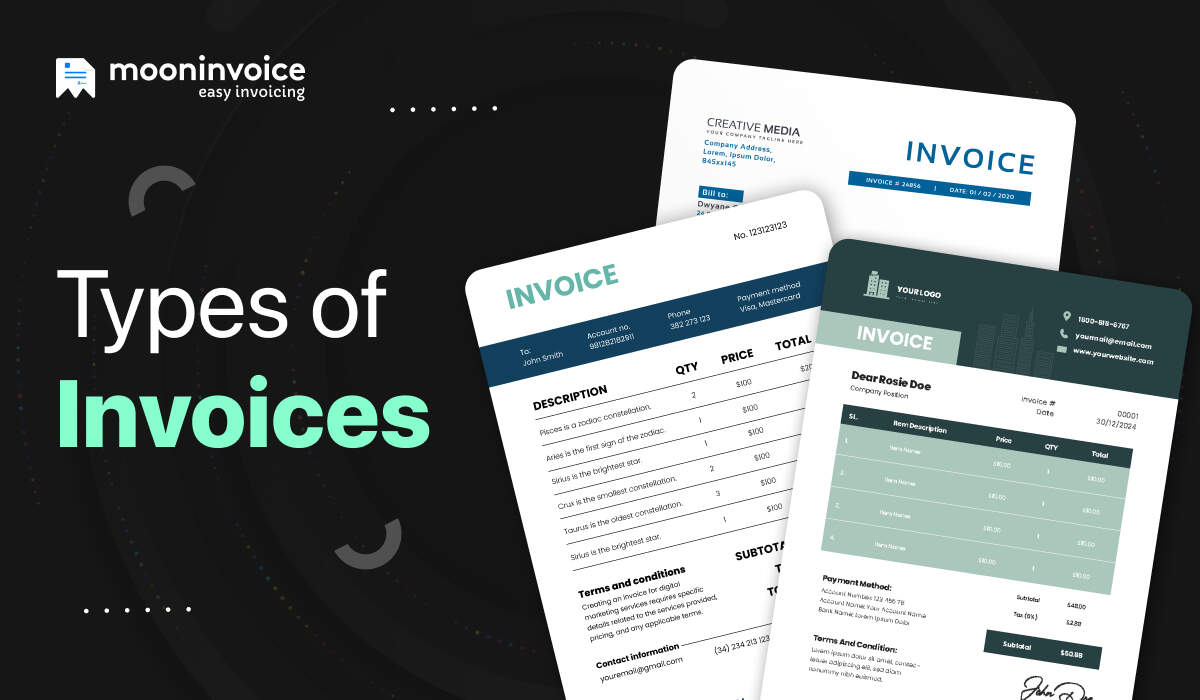In any organization, managing purchases is an important part of maintaining financial control and ensuring smooth operations. Whether purchasing office supplies, raw materials, or services, businesses need a structured process for requesting and approving purchases. This is where Purchase Requisitions (PRs) and Purchase Orders (POs) come into play.
Both documents are essential in procurement, but they serve different purposes. A Purchase Requisition is an internal request for approval before making a purchase, while a Purchase Order is an official document sent to suppliers to confirm the order. If you don’t understand the differences between these two, it will be tricky to streamline the purchasing workflow.
In this article, we’ll break down the major differences between a Purchase Requisition and a Purchase Order, their roles in the procurement process, and why both are essential for an organized purchasing system.
So, let’s get started!
What is a Purchase Requisition?
A purchase requisition (PR) is an internal document used by employees or departments to request the formal purchase of goods or services. It serves as the initial step in the procurement process, ensuring that purchases are necessary, approved, and within budget before they are processed.
Purpose of a Purchase Requisition
The primary purpose of a Purchase Requisition is to establish a structured and controlled way of initiating purchases. It helps organizations:
- Prevent unauthorized spending by requiring approval before making purchases.
- Ensure budget control by verifying available funds before procurement.
- Maintain accountability by tracking requests back to specific departments or employees.
- Streamline procurement by creating a formal process that avoids confusion and inefficiencies.
Create & Manage Purchase Orders in Seconds!
With Moon Invoice, you can create professional purchase orders (POs) with just a few clicks.
Who Creates a Purchase Requisition?
Purchase Requisition forms are created by employees or department heads who recognize the need for a product or service. This purchase request is then submitted to higher management, the finance department, the accounting department, or the procurement team for review and approval.
Key Components of a Purchase Requisition
A Purchase Requisition form includes the following details:
- Requestor Information – Name and department of the employee making the request.
- Item Description – Details of the product or service being requested.
- Quantity – The number of units required.
- Estimated Cost – A rough estimate of the expected price.
- Reason for Purchase – Justification for why the item or service is needed.
- Preferred Vendor (if applicable) – Suggested supplier details.
- Approval Workflow – Signatures or digital approvals from the necessary authorities.
How Does the Purchase Requisition Process Work?
Here is a quick look at how the purchase requisition workflow goes through:
- Request Submission – An employee or department identifies the need and submits a PR.
- Review & Approval Process – The request is reviewed by managers, finance, or procurement teams to ensure budget alignment and necessity.
- Requisition Approval or Rejection – If the request is justified, it is approved. If not, it may be rejected or sent back for modifications.
- Purchase Order Creation – Once approved, the PR is converted into a Purchase Order (PO) and sent to the supplier.
Types of Purchase Requisition
A Purchase Requisition (PR) can take different forms depending on the organization’s procurement system and purchasing needs. Below are the main types of purchase requisitions used in businesses:
1. Standard Purchase Requisition
This is the most common type of PR, used when employees or departments request goods or services for regular operations. It follows the procurement system’s approval workflow before being converted into a Purchase Order (PO).
2. Planned Purchase Requisition
A planned PR is used for periodic anticipated purchases. Organizations create these requests in advance based on forecasting, ensuring timely procurement of essential supplies or services.
3. Emergency Purchase Requisition
Used in urgent situations where an immediate purchase is required, often bypassing standard approval processes. However, a well-defined procurement system ensures that even emergency purchases follow a streamlined approval path to maintain accountability.
Example of a Purchase Requisition in Action
Imagine a company’s marketing department needing new promotional materials for an upcoming event. A team member submits a Purchase Requisition detailing the quantity of brochures and banners and their estimated costs. The manager reviews and approves the request, after which the procurement team processes it by creating a Purchase Order to send to the supplier.
What is a Purchase Order?
A Purchase Order (PO) is a legally binding document issued by a company to a supplier, detailing the products or services it wants to purchase. Once accepted by the supplier, a PO serves as a formal contract that outlines the terms of the purchase, including price, quantity, and delivery expectations.
Purpose of a Purchase Order
The primary purpose of a Purchase Order is to establish a clear and structured procurement process. It helps organizations:
- Ensure accurate and authorized purchasing by documenting what is being ordered.
- Avoid miscommunication by clearly specifying order details.
- Strengthen financial control by preventing unauthorized spending.
- It serves as a legal contract between the buyer and supplier to protect both parties.
Who Issues a Purchase Order?
The procurement or purchasing department issues a Purchase order after reviewing and approving a purchase requisition. Once issued, the PO is sent to the supplier to confirm the order.
Key Components of a Purchase Order
A well-structured PO typically includes:
- Purchase Order Number – A unique identifier for tracking purposes.
- Buyer Information – The name and contact details of the purchasing company.
- Supplier Information – The name and contact details of the vendor.
- Order Date – The date the PO is issued.
- Item Details – A clear description of the goods or services being ordered.
- Quantity – The number of units ordered.
- Agreed Price – The cost per unit and the total amount.
- Payment Terms – Details on how and when payment will be made.
- Delivery Date and Location – Where and when the goods/services should be delivered.
- Authorized Signatures – Approvals from relevant personnel.
How Does the Purchase Order Process Work?
- Purchase Requisition Approval – Once a PR is approved, the procurement team creates a Purchase Order.
- PO Issuance – The PO is sent to the selected supplier for confirmation.
- Supplier Acceptance – The supplier reviews the PO and confirms acceptance (or negotiates terms if necessary).
- Order Fulfillment – The supplier processes and ships the goods or provides the requested services.
- Goods Receipt & Inspection – The buyer receives the goods/services and verifies them against the PO.
- Invoice & Payment – The supplier sends an invoice by using automated invoicing software like Moon Invoice, and the buyer processes the payment according to the agreed-upon terms.
Types of Purchase Orders
A Purchase Order (PO) is a legally binding document that formalizes a purchase agreement between a buyer and a supplier. Businesses use different types of POs based on their procurement needs, ensuring efficiency and compliance when the proposed purchase exceeds internal approval limits. Below are the main types of purchase orders:
1. Standard Purchase Order (SPO)
The most common type is a standard purchase order. It is used for one-time purchases where the details—such as quantity, price, and delivery date—are clearly defined. This is typically used when the proposed purchase exceeds a certain threshold, requiring formal approval and documentation.
2. Blanket Purchase Order (BPO)
A Blanket PO is used for recurring purchases from the same supplier over a period of time. Instead of issuing multiple POs, businesses negotiate terms upfront, ensuring cost control and procurement efficiency. This is useful when organizations frequently reorder the same items.
3. Contract Purchase Order (CPO)
A Contract PO is a legal agreement between a buyer and a supplier that outlines the general terms and conditions for future purchases. However, specific order details, such as quantity and delivery schedules, are not included until individual purchase releases are made.
4. Planned Purchase Order (PPO)
A Planned PO is used when a business anticipates a future purchase but doesn’t have a confirmed delivery schedule. This type of PO outlines estimated quantities, pricing, and expected timelines, allowing flexibility for procurement planning.
5. Digital Purchase Order
With modern procurement systems, organizations increasingly use digital purchase orders, which are created, approved, and tracked electronically. These POs reduce paperwork, speed up approvals, and improve accuracy in procurement workflows.
Example of a Purchase Order in Action
A company needs 50 laptops for its new employees. The procurement department creates a Purchase Order specifying the laptop model, quantity, unit price, and delivery timeline. The PO is sent to the supplier, who confirms the order and ships the laptops. Once received and inspected, the company processes the supplier’s invoice for payment.
Purchase Requisition vs. Purchase Order: Key Differences
In procurement, both Purchase Requisitions (PRs) and Purchase Orders (POs) play vital roles in ensuring a smooth purchasing process. However, they serve different purposes and are used at different stages.
Understanding the key differences between these two documents is essential for maintaining control, avoiding errors, and streamlining procurement operations.
1. Definition & Purpose
- A purchase requisition (PR) is an internal document used by employees or departments to request approval for a purchase before placing an order. It acts as a preliminary step to ensure the purchase is necessary and authorized.
- A Purchase Order (PO) is a legally binding document sent to a supplier to formally request the purchase of goods or services after the PR has been approved. It outlines the final order details, including quantity, price, and payment terms.
2. Who Creates It?
- A PR is created by employees, department heads, or project managers when they need to purchase something.
- A PO is issued by the procurement or purchasing team after the PR has been reviewed and approved.
3. Approval Process
- A PR requires approval from managers, finance teams, or procurement departments before proceeding to the next step. This ensures that only necessary and budget-approved purchases are processed.
- A PO does not require further approval because it has already been reviewed before issuance. Once a PO is sent to the supplier, it becomes a commitment to purchase.
4. Internal vs. External Document
- A PR is an internal document, meaning it stays within the company and is used for authorization and tracking purposes. It is not shared with external vendors.
- A PO is an external document sent to suppliers to place an official order. Once the supplier accepts it, it serves as a legally binding contract.
5. Legally Binding Nature
- A PR is not legally binding because it is only a request for approval. It does not guarantee that the purchase will take place.
- A PO is legally binding once accepted by the supplier, ensuring that both parties adhere to the agreed terms and conditions.
6. Key Components
| Feature | Purchase Requisition | Purchase Order |
|---|---|---|
| Purpose | Internal request for approval before purchasing | External document for procuring goods/services |
| Created By | Employees, department heads | Procurement team |
| Approval Required? | Yes, from managers or the finance team | No, already approved |
| Legally Binding? | No | Yes |
| Sent to Supplier? | No | Yes |
| Key Information | Item description, quantity, estimated cost, reason for purchase | Supplier details, agreed price, payment terms, delivery details |
Role in the Procurement Workflow
- Step 1: Purchase Requisition → Employees request approval for a purchase.
- Step 2: Purchase Order → Once the PR is approved, the procurement team generates a PO and sends it to the supplier.
- Step 3: Order Fulfillment → The supplier delivers the goods/services as per the PO.
Example Scenario: How PR and PO Work Together?
Scenario: A company’s IT department needs 20 new monitors.
- The IT manager submits a Purchase Requisition, specifying the monitor model, quantity, and estimated price.
- The finance team reviews the request and approves it based on budget considerations.
- The procurement team creates a Purchase Order and sends it to the selected supplier.
- The supplier confirms the PO, delivers the monitors and invoices the company for payment.
Purchase Requisition vs. Purchase Order: Benefits
Purchase Requisitions (PRs) and Purchase Orders (POs) serve different purposes but provide significant benefits that help organizations ease their financial hassles. Let’s explore their advantages in detail.
Benefits of Purchase Requisition
A Purchase Requisition (PR) is the first step in the procurement process. It ensures that every purchase is necessary, approved, and budgeted before proceeding. Here are its key benefits:
1. Prevents Unnecessary and Unauthorized Purchases
- PRs require managerial and financial approval. Employees cannot place orders without proper authorization.
2. Enhances Budget Control
- By requiring approval before purchasing, PRs help organizations stay within budget and prevent overspending.
3. Improves Internal Communication
- Employees and departments can communicate their needs clearly. This will clarify matters with the procurement team and help them understand requirements before making a purchase.
4. Streamlines Procurement Workflow
- Establishing a formal PR process creates a structured purchasing system. It prevents confusion and unnecessary delays.
5. Reduces Procurement Errors
- PRs ensure that the correct items, quantities, and estimated costs are reviewed beforehand, which reduces mistakes in purchase orders.
Benefits of Purchase Orders
A Purchase Order (PO) is a legally binding document that serves as an official contract between the buyer and the supplier. Its benefits include:
1. Ensures Clear and Legally Binding Agreements
- A PO clearly defines the terms of the purchase. It ensures both parties agree on price, quantity, and delivery before the transaction.
2. Avoids Miscommunication with Suppliers
- A PO documents all order details in writing and prevents misunderstandings about what is being ordered and expected delivery timelines.
3. Strengthens Financial Control and Planning
- Since POs require pre-approval and budget verification, they help businesses track expenses and prevent financial discrepancies.
4. Simplifies Invoice Matching and Payment Processing
- A PO serves as a reference document and allows the finance team to match invoices with approved orders. It prevents overpayment or fraud.
5. Improves Inventory Management
- POs provide better visibility into pending orders. It allows Inventory teams to plan and manage stock levels more efficiently.
Are You Tired of Managing Purchase Orders Manually?
Moon Invoice offers an easy-to-use purchase order creation form that streamlines your procurement process. Generate, track, and manage POs effortlessly—all in one place!
Conclusion
From startups to multinational corporations, businesses rely on Purchase requisitions and Purchase order forms to maintain financial control, optimize spending, and ensure compliance. These documents play a crucial role in budgeting, cost savings, and audit protection.
Moon Invoice takes the hassle out of managing purchase workflows with its built-in purchase order creation form. This enables businesses to generate, track, and process orders effortlessly.
Say goodbye to manual paperwork and streamline your procurement and finance operations with Moon Invoice today!
















